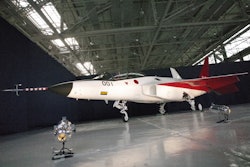The manufacturing industry is constantly in flux, and that’s especially true with the advent of Industry 4.0, also called the Fourth Industrial Revolution. Data is more available and important than ever before, thus making efficiency gains even more measurable.
Advanced Technology Services’ Industrial Parts Services Vice President Mike Waltrip talked with Manufacturing.net about how manufacturers can handle intensifying efficiency pressures. Coming from a company that straddles many manufacturing sectors, Waltrip offered three technologies worth investing in: 3D printing, automation and the Internet of Things.
1. 3D Printing
A recent study by A.T. Kearney projected that the value of the 3D printing market will reach $7 billion in 2016 and will more than double by 2020, when it is expected to reach $17.2 billion.
“This technology has greatly increased in capability within the last 12 months,” Waltrip says. “The costs continue to go down, and the new additive manufacturing technology continues to be a great option to traditional manufacturing.”
In addition to the time saved by the ability to send a design directly to production, additive manufacturing can also increase operational efficiency by reducing the number of spare parts businesses need on hand. Instead of purchasing and storing these parts, manufacturers can 3D print the parts they need as they need them.
2. Automation
Although factories have been automating repetitive tasks with industrial robots for decades, the potential of these machines is far from completely fulfilled.
“As manufacturing organizations continue to see the pressure and costs and the need to increase efficiencies, automation, industrial automation is going to continue to be a need,” says Waltrip.
Between 2010 and 2014, the International Federation of Robotics noted that the number of industrial robots in use increased 48 percent — that’s an obvious push for continued automation. To translate that demand into dollars, U.S. manufacturers spent $1.6 billion on new robot orders in 2014.
By the end of 2016, the Freedonia Group estimates that market will exceed $5 billion and hit $9 billion by 2021.
3. Internet of Things
With the increase of automation in manufacturing, “being able to connect that automation through the Internet of Things allows an organization to be way more efficient,” says Waltrip.
In late 2015, a TEKSystems poll of 200 workers in the IT and business sectors found that less than a quarter of them were moving forward with IoT implementation, despite the technology’s potential efficiency gains. By using IoT to monitor machine performance, manufacturers can see reduced maintenance costs by up to 25 percent and reduce unplanned outages by up to 50 percent, according to the McKinsey Global Institute.
Additionally, a study by Gartner estimated that the number of installed IoT-capable units will jump from 4,902 in 2015 to 6,392 by the end of 2016. Within the next five years, that number will explode to 20,797. Considering how rapidly the IoT market is expected to expand, manufacturers who embrace the technology earlier will see exponentially more benefits in the long run.
Predictions Synopsis
So, to sum up the technology predictions in 2016:
- Additive manufacturing’s efficiency gains will lead the market to be valued at more than $7 billion by the year’s end.
- Manufacturers will continue to increasingly automate tasks with industrial robots and are expected to spend $5.1 billion on the venture this year.
- IoT implementation will flourish with increased automation, leading more manufacturers to take the leap in 2016 than ever before for an estimated 6,392 IoT devices installed.
Is your company investing in any of these technologies? What other investments should manufacturers consider in the coming year? Comment below or tweet @MNetKatie.























